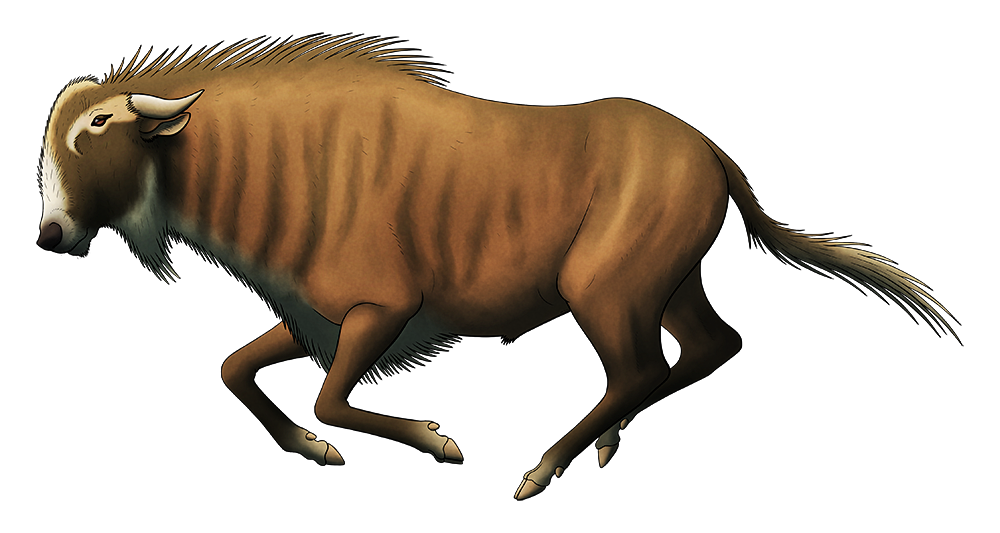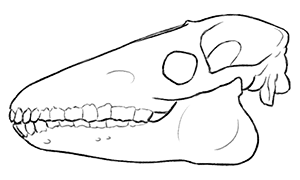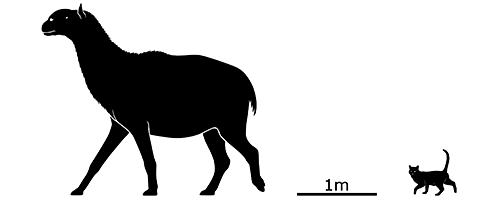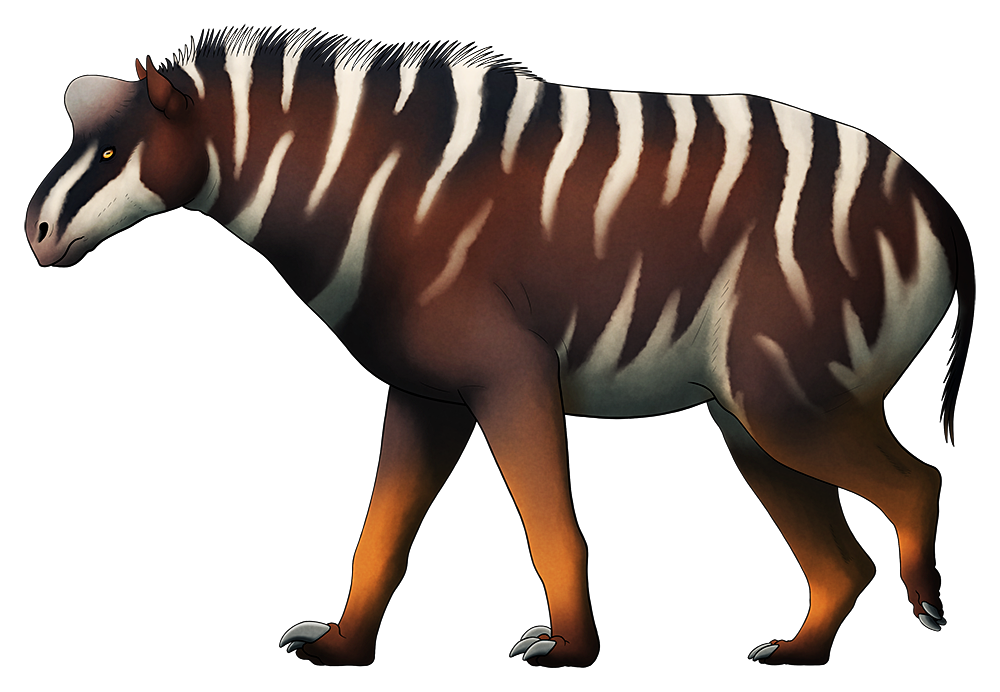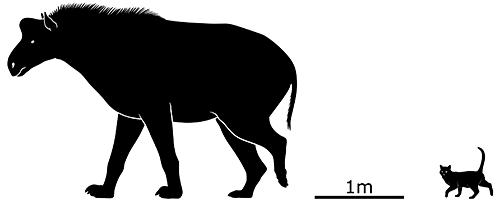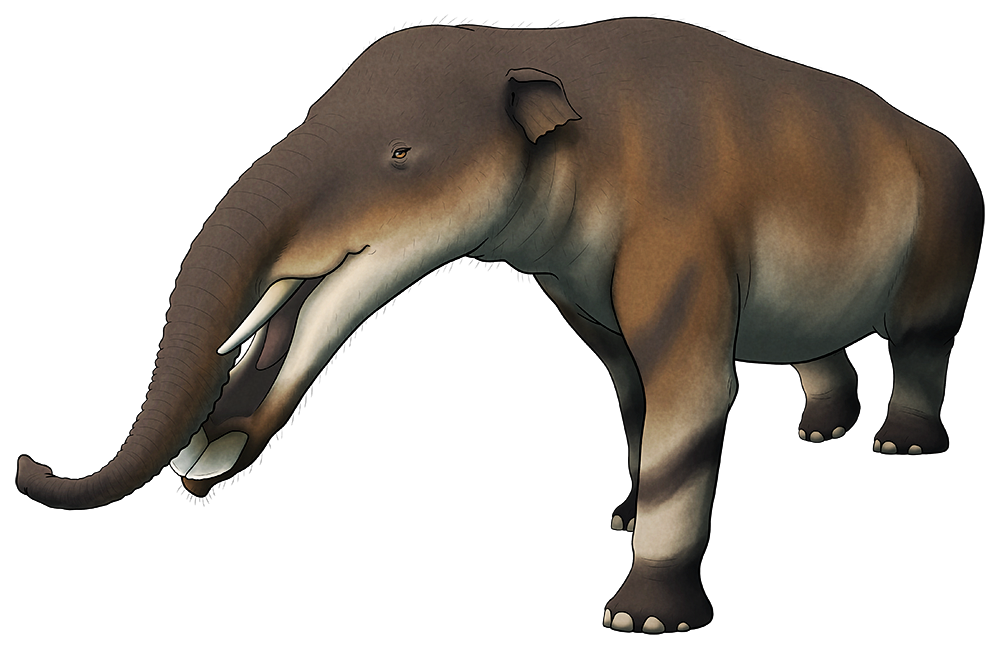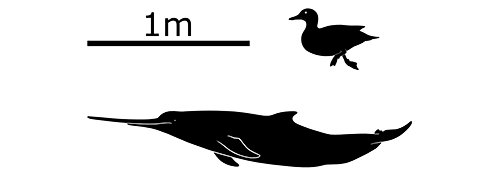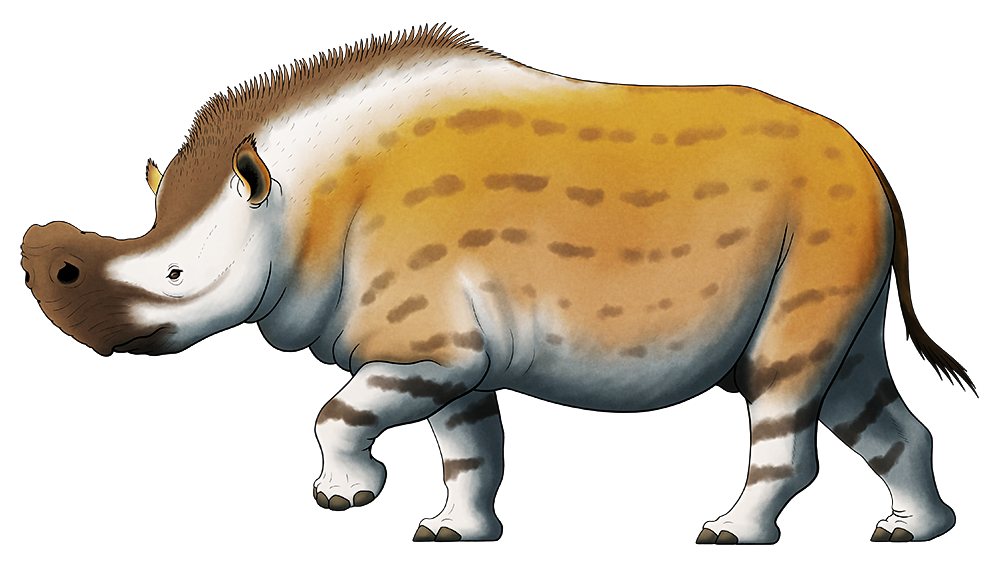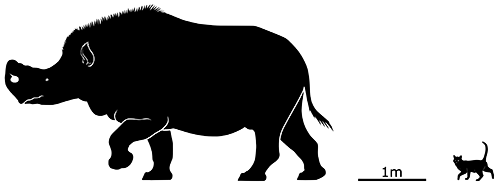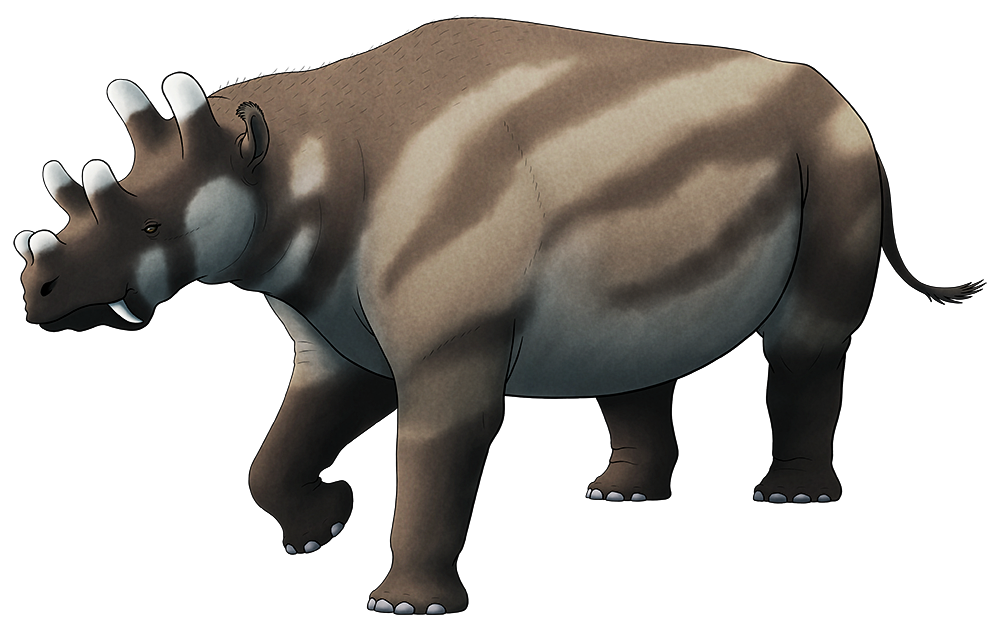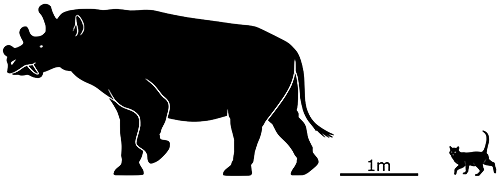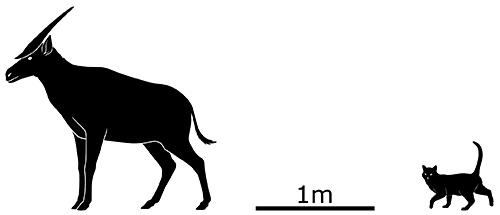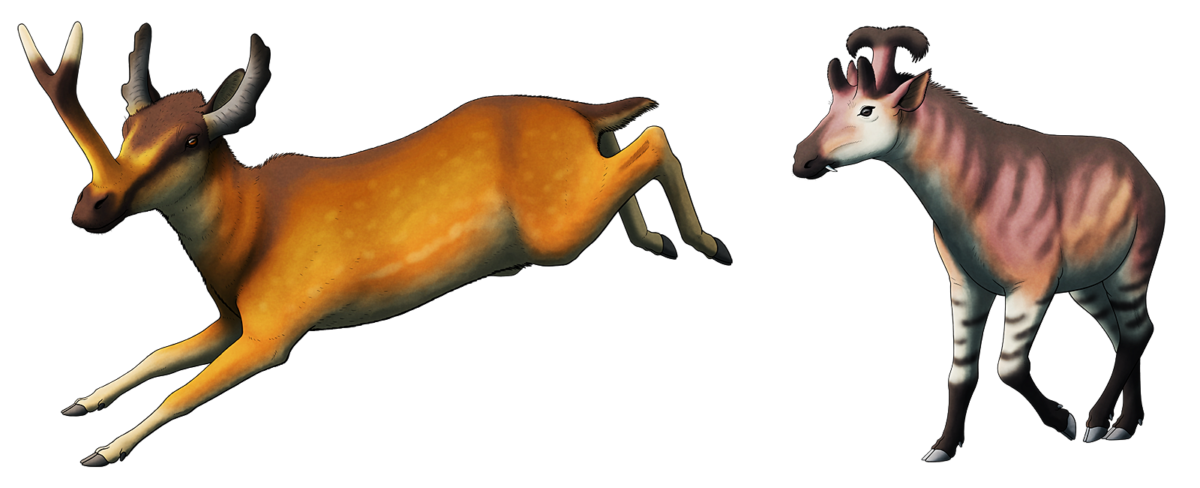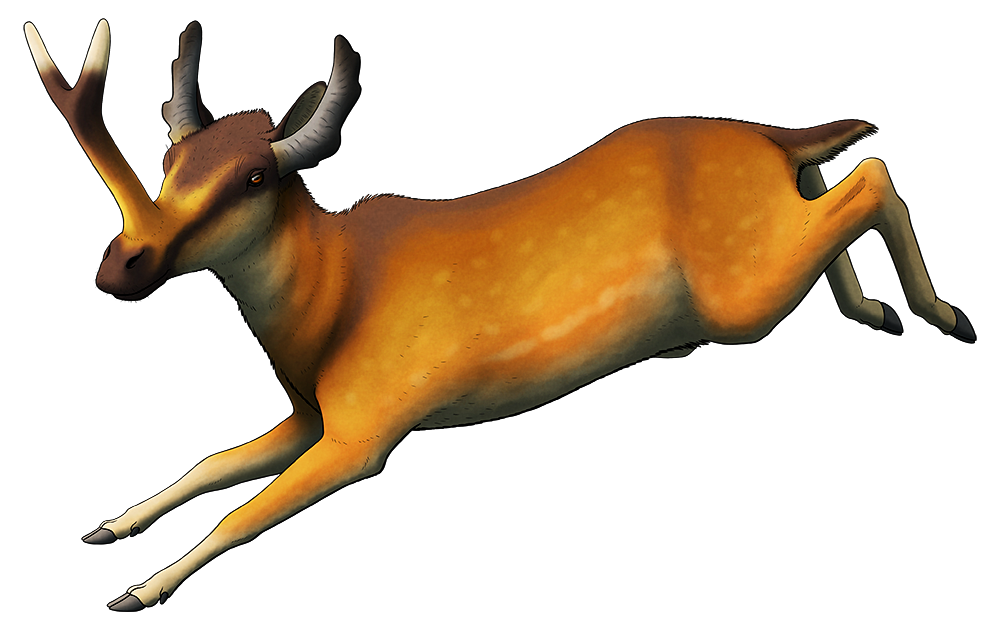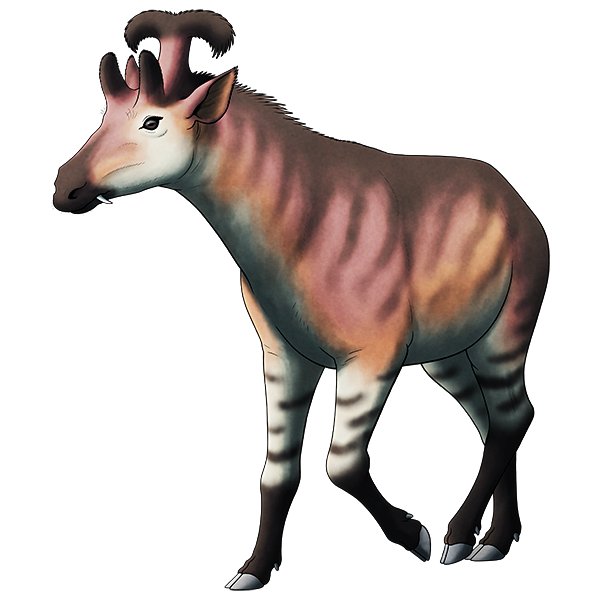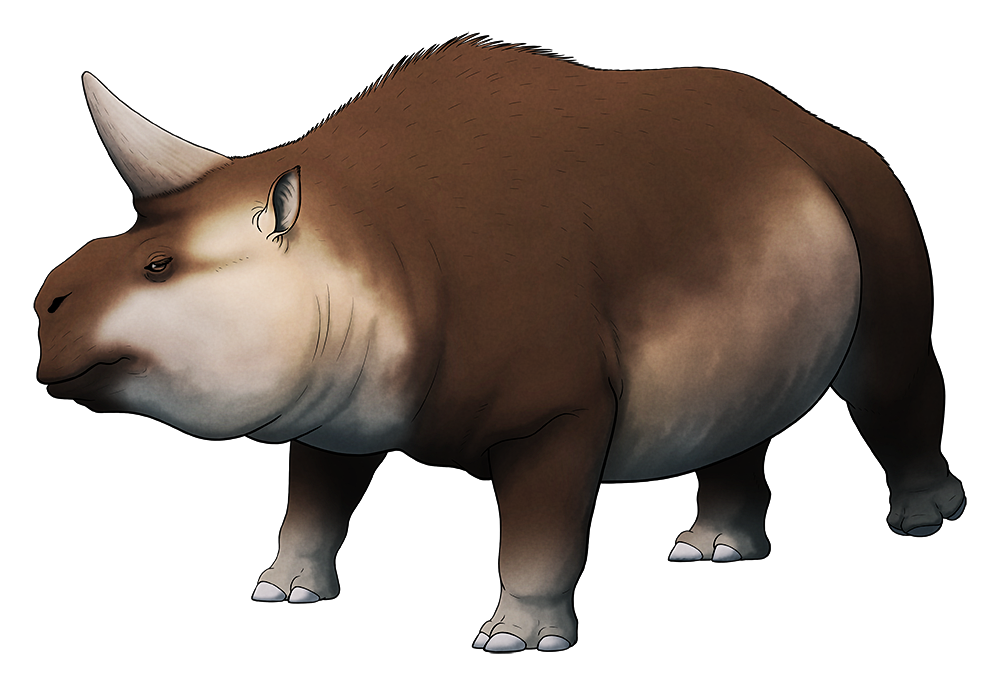Earlier in this series we saw some ruminants with bizarre-looking headgear, but there was another species in that group that evolved a completely different type of strange head.
Rusingoryx atopocranion was a close relative of modern wildebeest that lived during the late Pleistocene, around 100,000 to 50,000 years ago. Its fossil remains are known from the Kenyan part of Lake Victoria, on Rusinga Island – an area which wasn’t actually an island at the time due to lower lake levels, and was instead part of a hot dry grassland environment.
Standing about 1.2m at the shoulder (~4′), it had an oddly-shaped skull with a pointed snout and a highly domed forehead. But this wasn’t the thick bony dome of a headbutting animal – this structure was narrow and fairly fragile, and had looping nasal passages running through it.
Instead it was something never before seen in any mammal: a bony nasal crest convergently similar to those of hadrosaurid dinosaurs.
Juveniles had less developed crests, developing them as they matured, and one skull that may represent an adult female also has a smaller crest, suggesting that this feature was sexually dimorphic.
Based on just the anatomy of the nasal passages Rusingoryx may have honked at a frequency similar to a vuvuzela, but the added length of its vocal tract could have lowered this pitch even further, closer to infrasound ranges – so more like a tuba! Such low frequencies can travel very long distances and are also below the hearing range of many carnivores, and would have effectively allowed Rusingoryx to shout at each other in “stealth mode”.


